July 11th
| Farmer | Location | AFC (Kgs DM/ha) | Cover /cow | Growth (kg DM /ha/day) | Demand (kg DM /ha/day) | Stocking rate (LU/ha) | Pre-grazing yield (Kgs DM/ha) | Kgs Meal | Kgs Silage/ Soya Hulls/PKE |
Litres | Fat % | Prot % | Kgs MS/cow | SCC ‘000 |
|---|---|---|---|---|---|---|---|---|---|---|---|---|---|---|
| John Walsh | Ballylooby | 560 | 193 | 36 | 38 | 2.9 | 1700 | 3 | 3 | 23.6 | 4.41 | 3.71 | 1.97 | 65 |
| Tim O’Riordan | Mourneabbey | 635 | 166 | 35 | 42 | 3.82 | 1150 | 4 | 7 | 21.7 | 4.11 | 3.52 | 1.70 | 153 |
| Jimmy Cotter | Coachford | 454 | 139 | 45 | 46 | 3.27 | 1300 | 5.5 | 0 | 23.8 | 4.59 | 3.93 | 2.09 | 69 |
| Joe Morrissey | Rostellan | 468 | 138 | 30 | 30 | 3.38 | 850 | 6 | 6 | 23.7 | 4.4 | 3.63 | 1.96 | 147 |
| Mark Lonergan | Rosegreen | 580 | 191 | 53 | 40 | 3.04 | 1150 | 4 | 4 | 23.6 | 4.48 | 3.88 | 2.03 | 177 |
| Sean Barry | Pallasgreen | 738 | 224 | 82 | 66 | 3.3 | 1600 | 2 | 0 | 22.5 | 4.13 | 3.84 | 1.85 | 79 |
| Sean Moher | Mitchelstown | 555 | 159 | 31 | 56 | 3.49 | 1000 | 3 | 0 | 22.7 | 4.13 | 3.61 | 1.81 | 69 |
| Tim Leader | Rathcoole | 708 | 209 | 61 | 61 | 3.38 | 1500 | 2 | 0 | 23.3 | 4.22 | 3.71 | 1.90 | 180 |
| Tom O’Connell | Inniscarra | 637 | 197 | 47 | 55 | 3.23 | 1400 | 3 | 3 | 21.2 | 4.62 | 3.88 | 1.85 | 104 |
| Raymond Goggin | Templemartin | 684 | 182 | 112 | 68 | 3.76 | 1500 | 2 | 0 | 24.2 | 4.1 | 3.74 | 1.96 | 64 |
| Average | 602 | 180 | 53 | 50 | 3.36 | 1315 | 3.5 | 2.0 | 23.0 | 4.32 | 3.75 | 1.91 | 111 |
Update
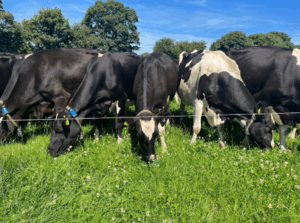
Sean Moher’s cows grazing
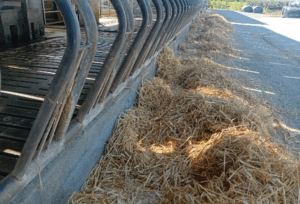
Walsh’s feeding soya hulls along the feeding barrier, on top of straw that was offered to cows last week when grazing high clover paddocks
Moisture deficit is taking effect at this stage with most of the Demo farmers having to feed extra this week. A combination of extra ration, zero-grazing, high quality silage bales or straights such as soya hulls/PKE are being used to fill the gap. Hopefully we will get enough rain so that this extra feeding is not required for long.
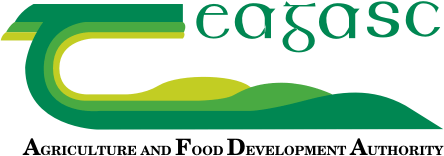
 Closing AFC of 733 is on target for the 1st of December. November growth has been good, leaving a bit more grass than planned on a few farms. Overall, it has been an excellent autumn for grazing. Walsh’s, who suffered from drought earlier in the year, produced the same 1.8 kg of MS per cow in October as they did in August.
Closing AFC of 733 is on target for the 1st of December. November growth has been good, leaving a bit more grass than planned on a few farms. Overall, it has been an excellent autumn for grazing. Walsh’s, who suffered from drought earlier in the year, produced the same 1.8 kg of MS per cow in October as they did in August.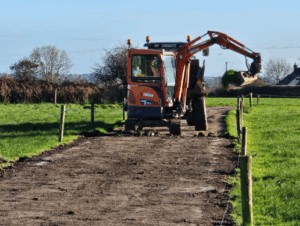
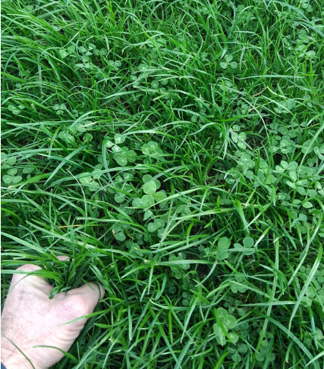 Grazing is nearly finished at this stage & even where there are a few grazings left the heavier farms are rained off. Overall the group are happy with how the October grazing went and are looking now to set the farms up with grass for the spring.
Grazing is nearly finished at this stage & even where there are a few grazings left the heavier farms are rained off. Overall the group are happy with how the October grazing went and are looking now to set the farms up with grass for the spring. Joe recorded a higher-than-expected grass growth rate of 31 kg DM/ha/day since last week’s on-farm event. This strong growth has allowed him to maintain his average farm cover. The main focus for Joe now is to monitor grass supply over the next 10 days and ensure the farm is closed in time to reach a target cover of 750 kg DM/ha by December 1st. The picture shows Joe’s cows grazing during last Thursday’s event. Since 2021, the higher-than-average fat and protein content of Joe’s milk has been estimated to add approximately €18,000 per year to his income compared to the average supplier, that’s a total of €90,000 over five years.
Joe recorded a higher-than-expected grass growth rate of 31 kg DM/ha/day since last week’s on-farm event. This strong growth has allowed him to maintain his average farm cover. The main focus for Joe now is to monitor grass supply over the next 10 days and ensure the farm is closed in time to reach a target cover of 750 kg DM/ha by December 1st. The picture shows Joe’s cows grazing during last Thursday’s event. Since 2021, the higher-than-average fat and protein content of Joe’s milk has been estimated to add approximately €18,000 per year to his income compared to the average supplier, that’s a total of €90,000 over five years.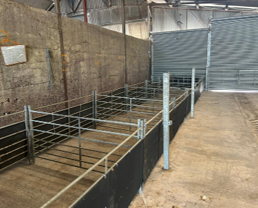
 There was a great turnout for the final Joint programme event on the farm of Tom & Helen O’Connell. Investments in grass and genetics to generate high output has put the farm in a position to have 2 full time employees as well as relief milkers & casual staff. We discussed the investments in equipment, layout & processes that Tom has made over the years to make the farm run smoother. Farm manager Dan pointed out that the 5pm finish time is one big seller for making farms more attractive places to work.
There was a great turnout for the final Joint programme event on the farm of Tom & Helen O’Connell. Investments in grass and genetics to generate high output has put the farm in a position to have 2 full time employees as well as relief milkers & casual staff. We discussed the investments in equipment, layout & processes that Tom has made over the years to make the farm run smoother. Farm manager Dan pointed out that the 5pm finish time is one big seller for making farms more attractive places to work.
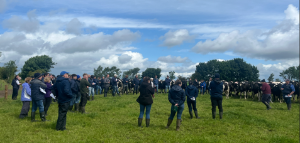 A farm walk took place on the farm of Tim and Mary Leader, Rathcoole, Co. Cork. The event was held as part of the Teagasc/Dairygold Joint Programme, with support from Cork East Advisory staff.
A farm walk took place on the farm of Tim and Mary Leader, Rathcoole, Co. Cork. The event was held as part of the Teagasc/Dairygold Joint Programme, with support from Cork East Advisory staff.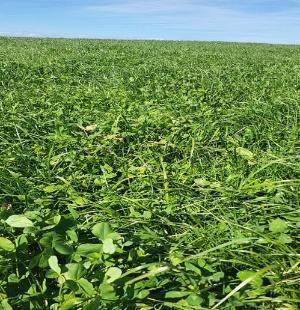 Tom O’Connell’s 4 year old Red Clover Silage sward. Photo taken Wednesday 7th of May. This was grazed with heifers in Spring and received 1 bag of 38-0-0-7 in early April. Tom is planning to mow this sward for 1st cut silage towards the end of next week.
Tom O’Connell’s 4 year old Red Clover Silage sward. Photo taken Wednesday 7th of May. This was grazed with heifers in Spring and received 1 bag of 38-0-0-7 in early April. Tom is planning to mow this sward for 1st cut silage towards the end of next week. Breeding
Breeding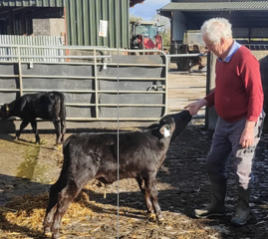 Cows are milking very well for mid April. Growth is almost equalling demand on farms at this stage allowing the ration to be reduced a little.
Cows are milking very well for mid April. Growth is almost equalling demand on farms at this stage allowing the ration to be reduced a little. but AFC is still low. It’s important to hold the rotation for a bit longer. The first grazed paddocks have covers of 600-1100 which still need time to get a number of paddocks to 1200-1300 for starting the 2nd round.
but AFC is still low. It’s important to hold the rotation for a bit longer. The first grazed paddocks have covers of 600-1100 which still need time to get a number of paddocks to 1200-1300 for starting the 2nd round. er than average growth along with lower than planned opening covers has meant that many of the Demo farmers who were out early need to slow down grazing currently. They are mainly achieving this by keeping cows in at night on silage and aiming to hold the planned start of the 2nd rotation until 10th April. The first grazed paddocks have covers of 500-600 which will need time to get to 1200-1300 for starting the 2nd round.
er than average growth along with lower than planned opening covers has meant that many of the Demo farmers who were out early need to slow down grazing currently. They are mainly achieving this by keeping cows in at night on silage and aiming to hold the planned start of the 2nd rotation until 10th April. The first grazed paddocks have covers of 500-600 which will need time to get to 1200-1300 for starting the 2nd round.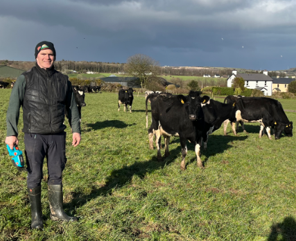 Calving is off to a good start on the demonstration farms with good numbers of cows calved already. Ground conditions are surprisingly good after all the storms we had in January. This has allowed a number of the farmers to get the 2025 grazing season started.
Calving is off to a good start on the demonstration farms with good numbers of cows calved already. Ground conditions are surprisingly good after all the storms we had in January. This has allowed a number of the farmers to get the 2025 grazing season started.